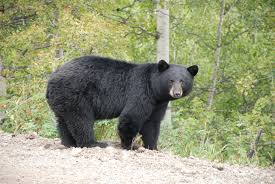
DEC Announces 2017 Bear Harvest Results |
| New York State bear hunters took 1,420 black bears during the 2017 hunting seasons, state Department of Environmental Conservation (DEC) Commissioner Basil Seggos announced today.
“New York has excellent bear habitat and vast, accessible public lands that offer exciting opportunities for bear hunting,” said DEC Commissioner Seggos. “With abundant natural food sources this past year, bears were in great condition, and several hunters took bears weighing in excess of 500 pounds.” Hunters took an estimated 1,037 black bears in New York’s Southern Zone, nearly the same number as in 2016, but slightly more than the recent five-year average. Bowhunters took 330 bears, on par with the recent average, but less than the 537 bears taken during the regular season. The early season, which DEC initiated in 2014 to reduce bear populations in a handful of management units in the Catskill region, resulted in 150 bears. In the Northern Zone, hunters took an estimated 383 bears, about 25 percent fewer than 2016 and below the historical average. Bear take in the Northern Zone tends to alternate between strong harvests during the early season one year, followed by strong harvests during the regular season the next year, based primarily on cycles of food availability. This year, the early season accounted for 82 bears, similar to the early seasons of 2011 and 2013. However, hunters fared much better during the regular season, taking 242 bears. For the second year, junior hunters were allowed to take black bears during the Youth Firearms Big Game Hunt over Columbus Day weekend. That hunt overlapped with the early bear season in most of the Northern Zone, but one junior hunter in the Northern Zone and eight in the Southern Zone took advantage of the opportunity to harvest a bear. Notable Numbers
2017 Bear Take Summary Report |
